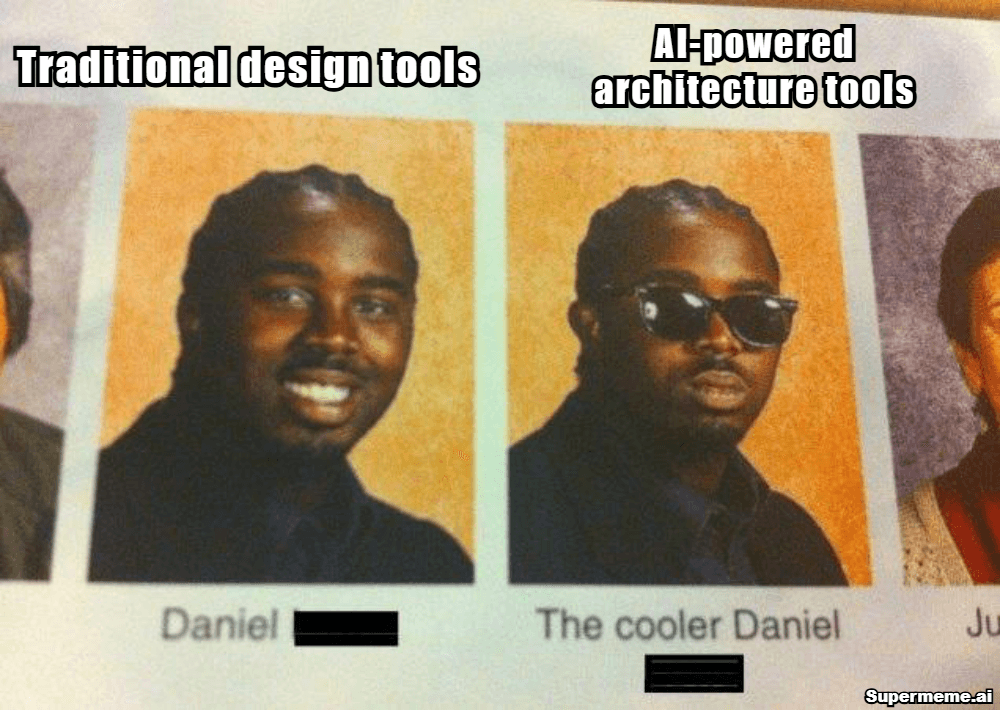In the rapidly evolving landscape of architecture, artificial intelligence (AI) has emerged as a transformative force, fundamentally reshaping how architects conceive, design, and deliver the built environment. No longer confined to automating simple tasks, AI now acts as a creative collaborator, a data-driven analyst, and a sustainability champion. This article explores why AI tools are a true game changer for architects, unlocking unprecedented efficiency, creativity, and adaptability across the entire design and construction process.
The New Era: AI’s Integration in Architectural Practice
Widespread Adoption and Industry Impact
AI adoption in architecture is accelerating at an extraordinary pace. According to the Royal Institute of British Architects (RIBA), 41% of practices already use AI for at least some projects, and this figure is expected to rise sharply as tools become more accessible and powerful1. Industry surveys reveal that 46% of architects currently utilize AI tools, with another 24% planning to do so soon. This widespread integration signals a paradigm shift: AI is not a futuristic novelty—it is fast becoming an indispensable component of modern architectural practice.
Revolutionizing the Design Process
From Automation to Augmentation
AI’s earliest contributions to architecture involved automating repetitive, time-consuming tasks such as drafting, compliance checks, and scheduling. Today, its role has expanded dramatically. AI-powered generative design tools allow architects to input objectives, constraints, and material preferences, then instantly generate a multitude of design alternatives—some conventional, others strikingly innovative. This rapid ideation process enables architects to explore creative possibilities that would be impossible to achieve manually.
AI also handles routine drafting responsibilities, freeing architects to focus on conceptual development and creative problem-solving. The result is not just faster project delivery, but superior buildings that are more thoughtful, efficient, and responsive to client needs.
Enhanced Visualization and Client Collaboration
One of the most significant advances brought by AI is in visualization and client engagement. AI-driven rendering tools and immersive technologies like virtual reality (VR) and augmented reality (AR) allow clients to experience proposed designs in real time, make instant changes, and provide immediate feedback. This interactive process improves communication, reduces misunderstandings, and ensures that the final design aligns closely with the client’s vision.
“Clients can step right into virtual spaces and make real-time changes. No waiting around. It speeds up decisions and keeps things moving… By catching any issues early, it avoids costly changes during construction.”

Creativity Unleashed: AI as a Design Partner
Generative and Parametric Design
AI’s generative design capabilities have unlocked new frontiers in architectural creativity. By analyzing vast datasets—ranging from historical design trends to client preferences and environmental factors—AI can suggest novel forms, layouts, and materials that challenge traditional boundaries. Firms like Zaha Hadid Architects use AI tools such as MidJourney and DALL-E to generate conceptual ideas that blend diverse aesthetics, expanding the creative horizon while maintaining the designer’s unique philosophy.
Parametric design, powered by AI, enables real-time customization. Architects can instantly adjust shapes, materials, or energy parameters, making the design process more flexible and responsive to evolving project requirements.
Case in Point: AI-Driven Iconic Projects
- Venus of the Curves by Zaha Hadid Architects: AI generated conceptual forms blending Renaissance grandeur with organic fluidity, inspiring new architectural expressions.
- Louvre Abu Dhabi: AI analyzed climate data to optimize the dome’s shading, balancing cultural symbolism with functional performance.
Efficiency, Productivity, and Cost Savings
Streamlining Workflows
AI dramatically boosts efficiency by automating labor-intensive tasks and optimizing workflows. From generating initial floor plans to running environmental simulations and managing project schedules, AI tools reduce manual effort and minimize errors. For example, BricsCAD BIM uses AI to convert 2D sketches into detailed 3D models, automate annotations, and provide real-time visualization, enhancing both speed and accuracy.
Project Management and Risk Reduction
AI enhances project management by predicting delays, optimizing resource allocation, and suggesting real-time adjustments. This data-driven approach ensures that projects are delivered on time and within budget, with fewer costly surprises during construction.
Sustainability and Environmental Performance
Designing for a Greener Future
Sustainability is no longer optional—it is a core requirement for modern architecture. AI excels at optimizing building performance for energy efficiency, resource conservation, and reduced environmental impact. Smart algorithms analyze climate, sunlight, wind, and other site-specific data to recommend designs that minimize energy consumption and carbon footprint from the outset.
AI also assists in selecting sustainable materials based on durability, cost, and environmental stress, reducing waste and ensuring smarter construction choices23. During construction, AI-powered systems monitor resource use and waste generation, further enhancing sustainability.
Predictive Analytics for Maintenance and Operations
AI’s impact extends beyond design and construction into building operations. Digital twins and IoT-enabled systems use AI to predict maintenance needs, optimize building management, and improve occupant comfort. This holistic approach ensures that buildings remain efficient and adaptable throughout their lifecycle.
Accessibility, Adaptability, and User-Centric Design
Inclusive and Adaptive Spaces
AI tools help architects design for accessibility and adaptability, ensuring that buildings can accommodate users with varying needs and respond to changing conditions. For example, AI can detect potential obstacles and suggest ways to increase accessibility for impaired individuals. AI-controlled lighting and space allocation systems enable buildings to adjust operations dynamically, maximizing efficiency and occupant well-being.

Real-World Examples: AI in Action
Project/Tool | AI Application | Outcome/Benefit |
|---|---|---|
Zaha Hadid Architects | Generative conceptual design | Expanded creative possibilities |
Daedalus Pavilion | Generative design, robotic fabrication | Optimized material use, rapid and sustainable build |
Louvre Abu Dhabi | Climate data analysis, shading design | Reduced energy use, enhanced cultural symbolism |
Guggenheim Museum, NY | Predictive maintenance, material selection | Preserved history, improved durability |
BricsCAD BIM | Automated drafting, 3D modeling | Faster, more accurate design development |
Spacemaker AI | Site analysis, urban planning | Optimized layouts, enhanced sustainability |
Collaboration and Data Integration
Seamless Teamwork Across Disciplines
AI-powered platforms facilitate real-time collaboration among architects, engineers, contractors, and clients by integrating data from multiple sources into unified models. This reduces data silos, streamlines communication, and ensures that everyone works from the latest information, minimizing errors and rework. Tools like Fieldwire’s construction project management software extend these benefits into the construction phase, providing centralized task tracking, on-site coordination, and instant access to updated project documents.
Interoperability and Data Management
AI assists in managing diverse file formats and retroactively structuring “dumb” data, such as extracting BIM models from point clouds or retrieving energy consumption data from 2D plans. This capability enhances interoperability and unlocks new uses for existing data, further boosting project efficiency.
Challenges and Considerations
Quality, Ethics, and Human Expertise
While AI offers remarkable benefits, its effectiveness depends on the architect’s expertise in guiding the design process and posing the right questions. Concerns remain about job displacement, ethical guidelines, and the need for industry standards to ensure transparency, quality assurance, and intellectual property protection. The consensus among professionals is that AI should enhance, not replace, the architect’s role—serving as a powerful partner in achieving better outcomes.
The Road Ahead: AI as an Indispensable Tool
AI’s integration into architecture is not a passing trend—it is a fundamental evolution. As tools become more sophisticated, their ability to enhance creativity, efficiency, and sustainability will only grow. The global market for architectural technologies is projected to reach $7.8 billion by 2027, with AI accounting for a significant share. This investment underscores the urgency and potential of AI to address the complex demands of modern architecture.
“AI will allow architects increasingly to step away from administration processes and be more focused on design problems… AI is expected to deliver tangible benefits for the profession in the near term.”

Conclusion
AI tools are a game changer in modern architectural design, not because they replace human ingenuity, but because they amplify it. By automating the mundane, unlocking creative possibilities, optimizing for sustainability, and fostering collaboration, AI empowers architects to meet the challenges of the 21st century head-on. The future of architecture is not just smarter—it is more imaginative, inclusive, and sustainable than ever before, thanks to the transformative power of artificial intelligence.


